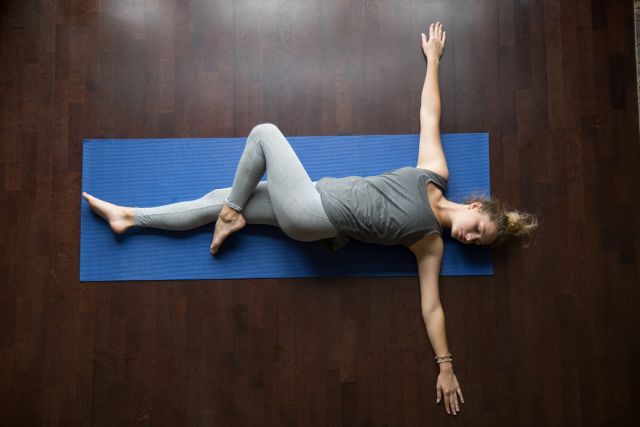Ankylosing Spondylitis (AS) is a type of arthritis that causes inflammation of the joints surrounding the spine. Over time, the bones in the spine can fuse together, causing the spine to become stiff and less flexible. This can lead to a hunched-over posture.
While the spine is typically the primary location of inflammation, AS can also affect other joints throughout the body—such as the knees, shoulders, ribs, and feet. AS is also associated with numerous other health conditions, such as osteoporosis, psoriasis, inflammation of the eye (uveitis), inflammation of the aortic valve in the heart, and inflammatory bowel disease (IBD).
There is no cure for AS and the condition requires ongoing management. Exercise and physical therapy are important components of treatment. Many people also require medications to treat AS. Medications may include anti-inflammatory drugs such as NSAIDs (over-the-counter pain relievers), DMARDs (disease-modifying antirheumatic drugs), and biologic therapies (also called biologic DMARDs).
In addition to medications and physical therapy, there are things you can do in your day-to-day routine that can help relieve symptoms and improve treatment.
- Exercise. Aside from physical therapy, you can do activities on your own to improve strength, flexibility, and posture. Walking, yoga, water aerobics, and swimming are some examples. Strengthening the core and legs are particularly important.
- Pay attention to your posture. Try to sit up straight when you’re at home or work to build and maintain core strength.
- Maintain a healthy diet. While there is no specific diet recommended for people with AS, a balanced diet will ensure that you are getting the nutrients your body needs, especially vitamin D and calcium which are integral to keeping your bones healthy.
- Reduce stress. Schedule time to do something relaxing each day and consider a mindfulness activity, such as meditation or deep breathing.
- Avoid smoking. Smoking can interfere with treatment and worsen the progression of the disease.
- Avoid alcohol. Alcohol can interact with medications and cause health issues that may worsen the progression of AS.
- Use hot/cold therapy. Heating pads or a hot shower can release stiffness in your joints while cold packs can reduce inflammation and ease pain.
- Get enough sleep. Make sure you have a mattress that offers support and use pillows to keep your legs in a comfortable position. Consider turning off phones and computers at least an hour before going to bed (or at the very least, using a blue light filter). Avoid caffeine, make sure your room is dark enough, and use an ambient noise machine if it helps you relax.
- Keep a journal. Keeping a record of your experiences with AS can help you and your healthcare provider make treatment decisions.
- Join a support group. Talking to people who understand your pain and frustration will help you stay connected and feel less alone with your diagnosis.
- Talk to a mental health professional. They can listen to your struggles and offer healthy coping strategies.
Most importantly, focus on the fact that you can live a full and healthy life while being treated for ankylosing spondylitis! Stay on top of your treatment plan and note any changes to your physical or mental health, and always remember that your best source of information is your healthcare provider.






